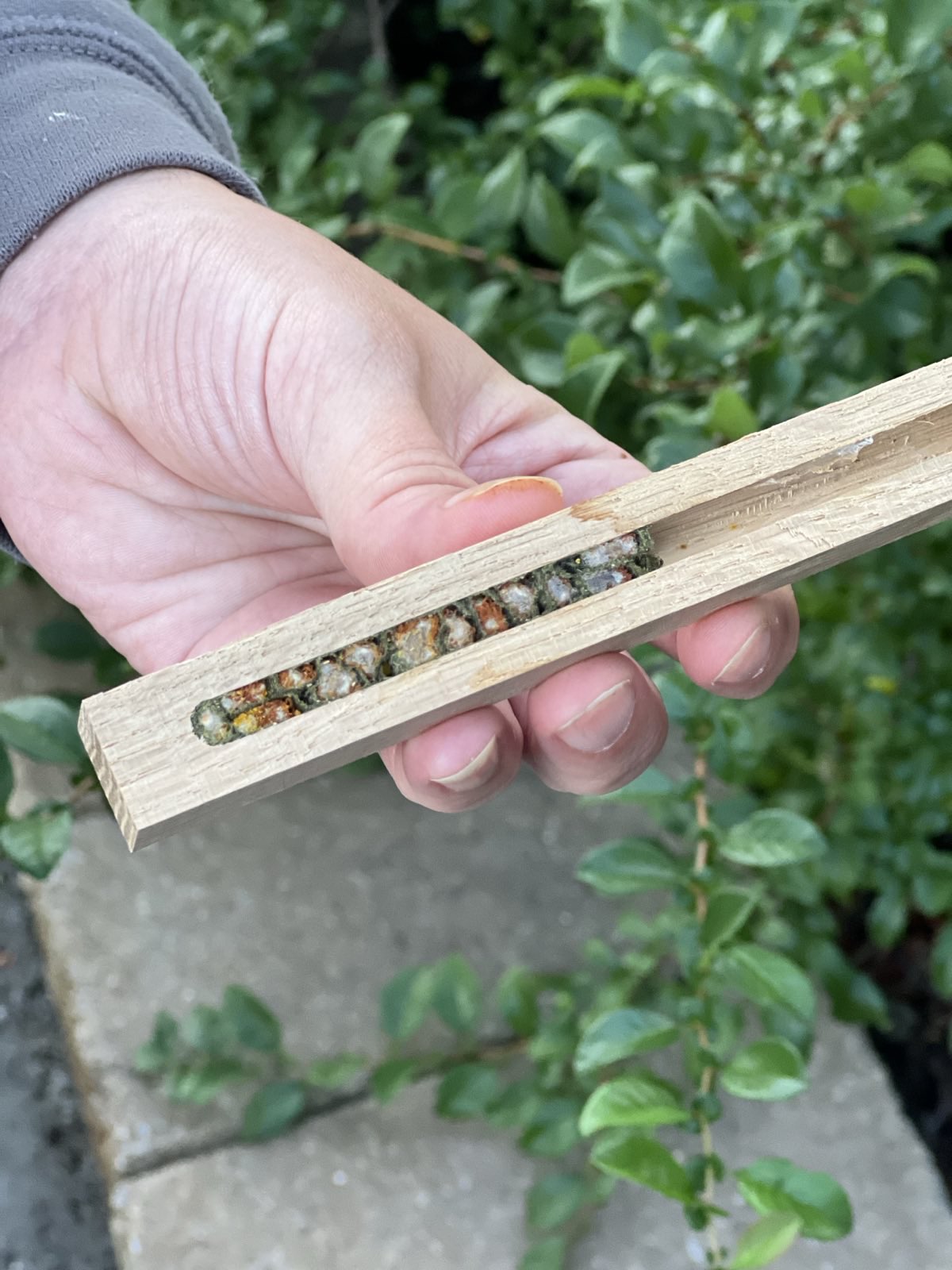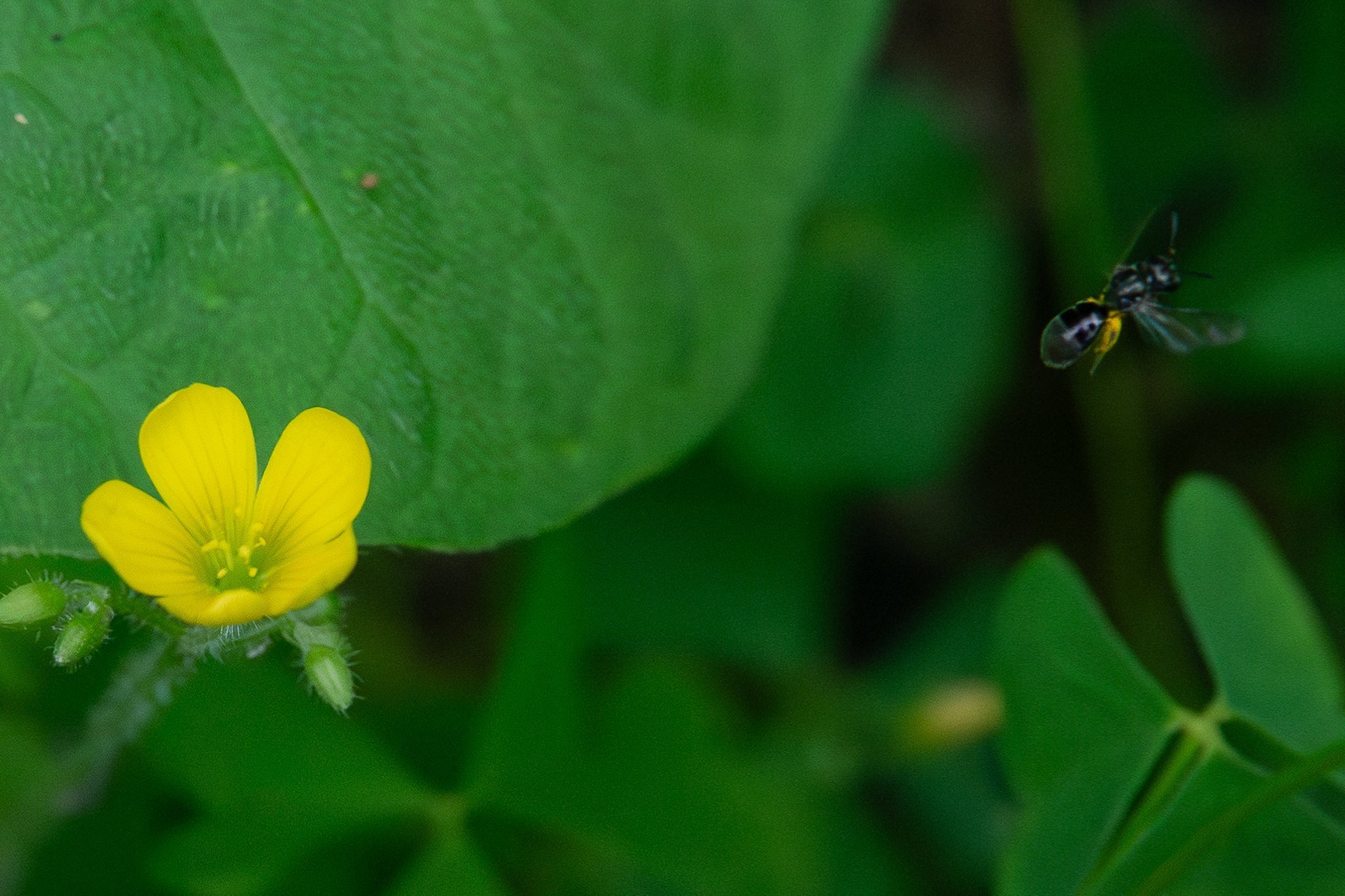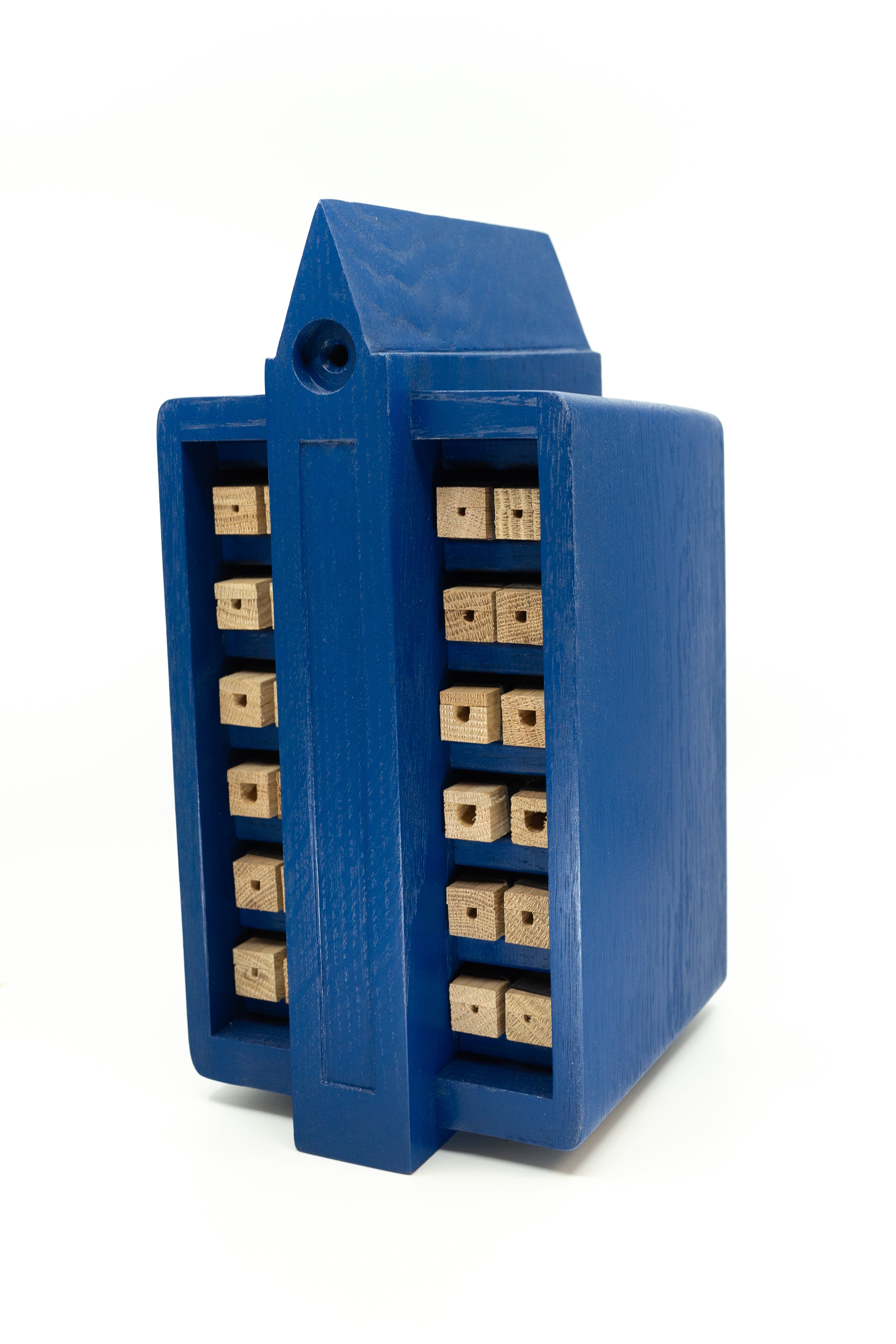The terms "leaf-cutter" and "mason" are often used to describe types of bees, but this can create quite a bit of confusion. For example, not all bees that use leaves are leaf-cutters, and some bees in the same genus as leaf-cutters use materials other than leaves to build their nests. Let's look at a few examples to help clarify this.
Some Mason Bees Use Leaves. But Not All “Masonry” Is Made by Mason Bees.
Some Osmia species, such as Osmia lignaria (the blue orchard bee), construct walls made from mud, while others use mixtures of leaf material, sand, and/or wood fragments. Regardless, bees in the genus Osmia are commonly known as "mason bees" because of these nest-construction habits.
For example, the nest below is a pretty typical mason-bee nest, potentially made by a species such as Osmia pumila, which uses bits of chewed-up leaves (a.k.a. leaf pulp or mastic) to construct the walls between brood cells and the outer nest plug:

There are species in other, closely related, bee genera like Hoplitis and Chelostoma that also build nest walls out of mud/sand/clay/leaf mastic, sometimes with pebbles mixed in. They could reasonably be called "mason bees" as well, and confusingly they sometimes are, but not always! Chelostoma, for example, seem to have been assigned the questionable common name "scissor bees".
Not All "Leaf-cutters" Use Leaves
Leaf-cutter bees all belong to the genus Megachile, and the scientific name "Megachile" and the common name "leaf-cutter bees" are frequently used interchangeably. However, this can be quite confusing, because not all Megachile species use cut leaf pieces in nest construction.
For example, bees in the subgenus Chelostomoides use resin instead of leaves in nest construction, and can therefore be called resin bees. So even though they are in the Megachile genus, they are not considered leaf-cutters.
To compare what a leaf-cutter nest looks like inside to others, the nest below is a typical leaf-cutter bee nest: the mother bee has used intact leaf pieces (as opposed to chewed-up leaves) to surround each brood cell:

To contrast, the nest in the two photos below was built by another "leaf-cutter" species - Megachile pugnata:


As you may be able to see, there is some leaf material in this nest - leaf pieces inside the front plug and layers of leaf mastic sandwiched between layers of mud between the brood cells. So this bee has indeed done some leaf-cutting, but her nest looks more like a mason-bee nest than a typical leaf-cutter nest!
In short, this is the problem with common names: they signify different things to different people. Most people find scientific names harder to remember, but scientists like them because they are less ambiguous (and let's be honest, because using them makes them feel smart).
--
Dr. Jessica Forrest
Associate Professor of Biology, University of Ottawa
Head of the Forrest Lab
Have bee footage or videos you want us to explain? Send them to creatures@scopabio.com!





Join Our Newsletter
Share:
Why Do Some Bees Just Seem to Be Camping Out in the Blocks, but Not Building a Nest?
What Is the Purpose of a Bee Hotel? Watching Bees, of Course!